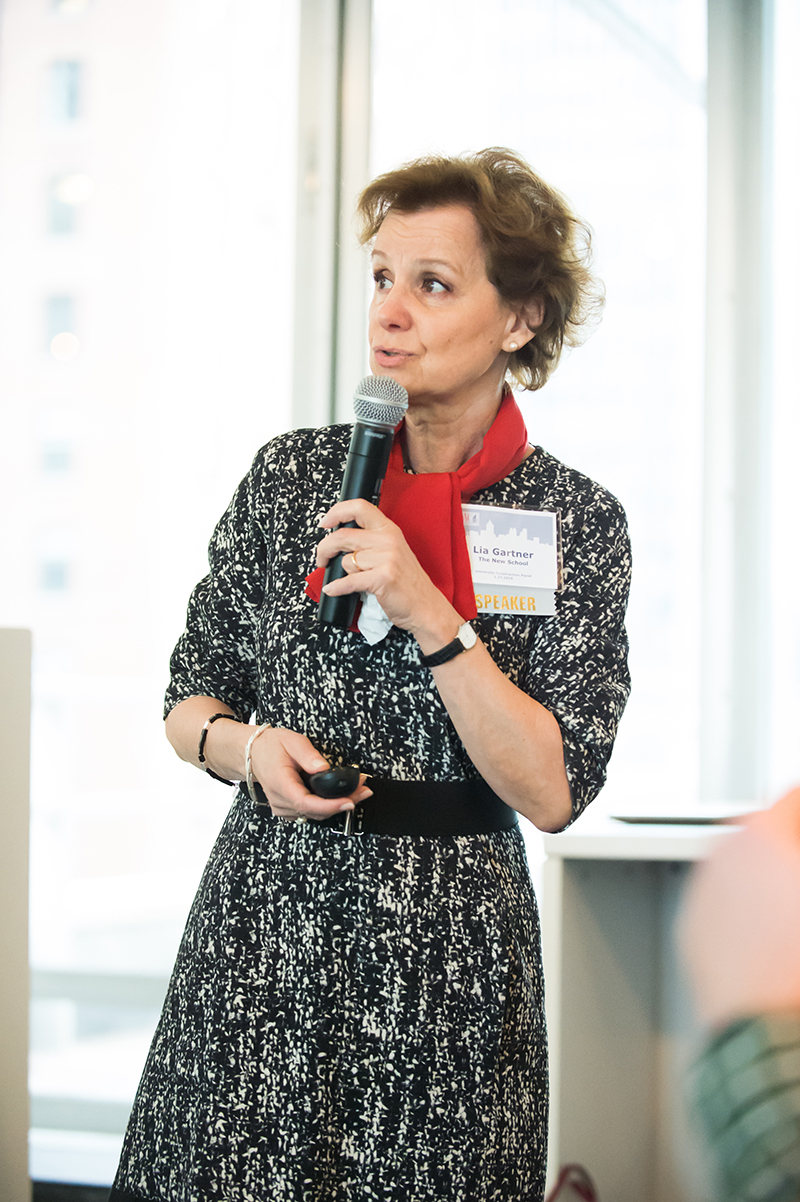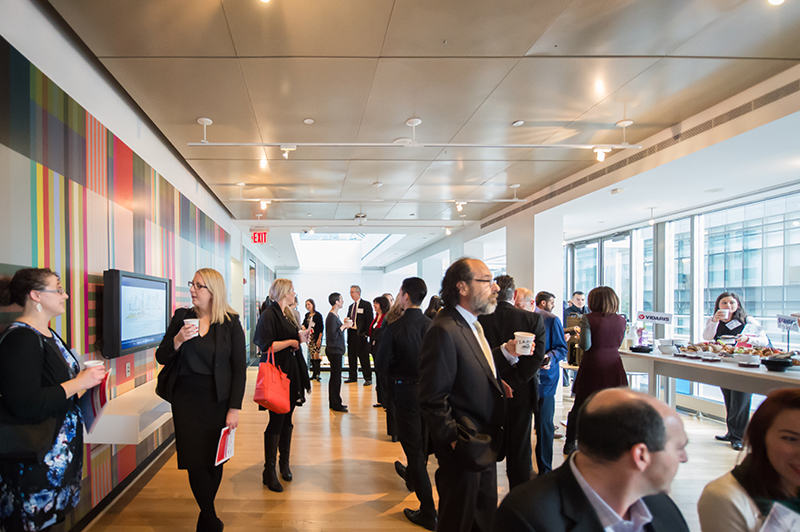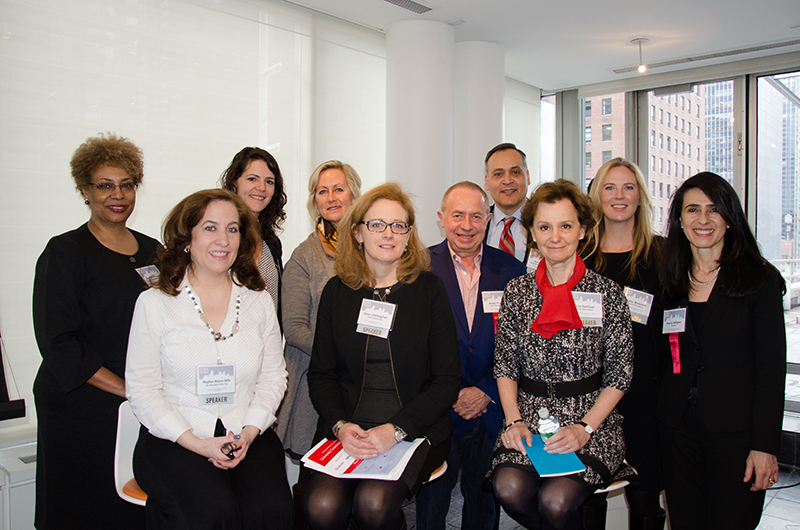PWC holds panel discussion on campus construction projects
 Shown (from left) are: Maria Wilpon, PWC Board Member and managing principal for architecture at Stantec; Gallagher; and Bicknell.
Shown (from left) are: Maria Wilpon, PWC Board Member and managing principal for architecture at Stantec; Gallagher; and Bicknell.Panelists included Lia Gartner of The New School; Kate Bicknell of Forest City Ratner –Cornell Tech’s Development partner; Meghan Moore-Wilk of CUNY; Marcelo Velez of Columbia University’s Manhattanville campus; and Jean Gallagher of Pace University.
Those on the panel represented the full spectrum of construction phases from having recently completed a large set of projects like The New School, to being in the initial planning phases like Pace, who won’t be accepting construction bids until late 2016 or early 2017.
With a population of 8.5 million and a land area of less than 304 sq. miles, one of the key questions in campus constructions is simply how to grow.
Campuses have employed a variety of strategies to answer this question, often taking into account the circumstances specific to their location. In the center of the city, many campuses are choosing to upgrade old, often crippled buildings. On the outer edges of NYC, it is more common to start from scratch.
Pace and CUNY are looking at their existing walls and creatively upgrading to continue to attract students. While Cornell Tech and Columbia’s Manhattanville are focused on brand new; attracting students to innovative design with a technology driven focus, The New School has embraced a hybrid of the two approaches, exploring ideas in both renovation and new construction to increase efficiency as much as possible, such as using circulation spaces as opportunities for social interaction. “Every space needs to be able to do many things,” said Lia Gartner.
Within the context of modern education, technology has become nearly as essential as location to New York’s campuses.
All panelists cited technology as a main driver with Bicknell discussing Cornell Tech’s origins, which came from a need to create a talent pipeline to feed New York’s fast-growing tech sector, and to “create a new model of graduate education that brings together academia and industry to spur innovation.” Velez elaborated on what smarter buildings mean for higher education institutions, and how growth and innovation are key to remain competitive with other universities. “Columbia has less square feet per student than any other Ivy League university. Long-term growth is vital to Columbia’s mission as one of the world’s great research universities while providing opportunities to the city and community,” said Velez.
Gartner and Moore-Wilk, while highlighting the essential advancements of technology, reminded the audience of an important question: Are we using materials and technology that our current staff can maintain? Moore-Wilk said, “We need to build out the infrastructure to allow the technology to advancement, but be very thoughtful about the equipment purchases to ensure that what we buy is necessary and will be utilized.”
Another challenge for campuses is how to react to the city itself.
NYC has 105 higher education facilities and the largest number of higher-ed students in the U.S., more than doubling the next city and growing daily. One of the main challenges, as well as opportunities, for these universities is to respond to the evolution of the city.
Pace is a prime example. Gallagher said, “Our signature building, One Pace Plaza, was built in late 1960’s at a time of civil unrest so it was designed to keep the city out. Now, students come to Pace to be a part of the energy of New York, we want our campus to reflect this mindset.”
Women are playing an increasingly important role in this development.
Looking to the future of NYC’s workforce and educational facilities, Columbia committed to 40% of their workforce and 35% of their contractors being women, minority or local, while Cornell Tech has committed to 12% MBE/ 5% WBE.
With an estimated $2 billion spent annually on campus construction in NYC, according to NYBC’s NYC-EDU Report, this sold out panel served as a particularly useful opportunity for construction professionals to gain insight, build relationships, and potentially increase their business. The panel was part of the continuing series of events put on by PWC. For information on Professional Women in Construction, or to find out about membership, please visit www.pwcusa.org or email Frances Wilson at [email protected]
Related Cos. and Sterling Equities open housing lottery for Willets Point Commons


Strategies for turning around COVID-distressed properties - by Carmelo Milio











.gif)


.jpg)
.gif)